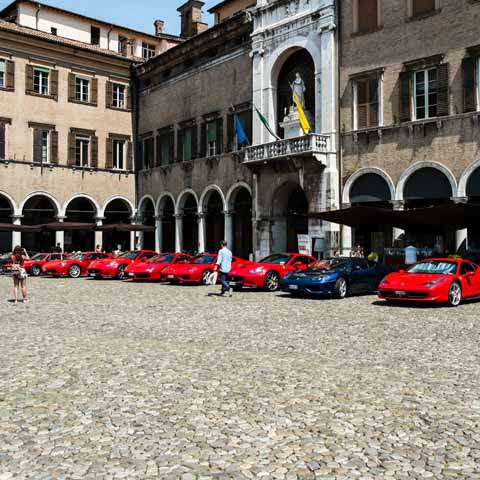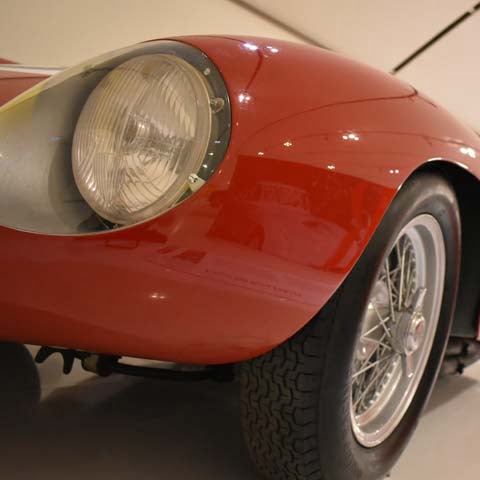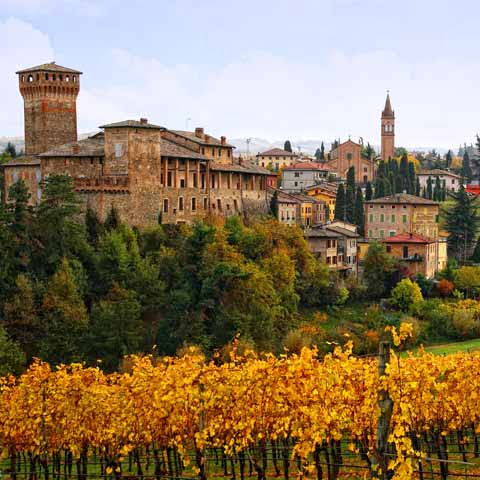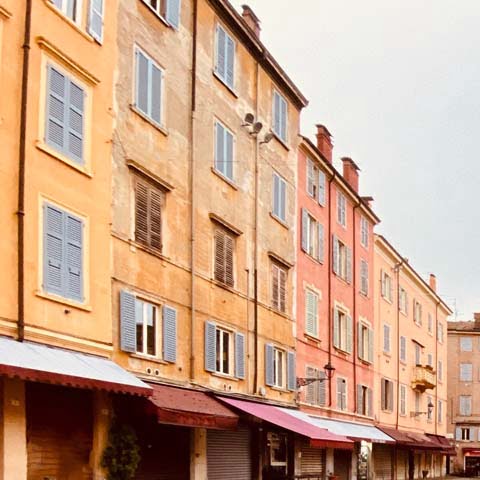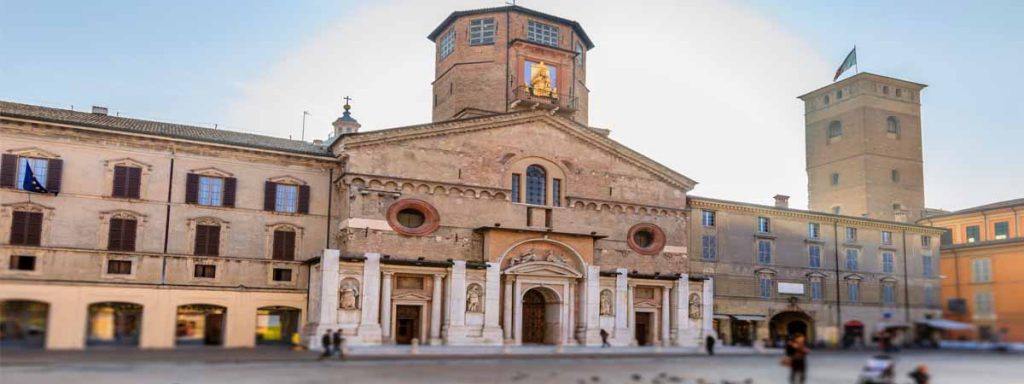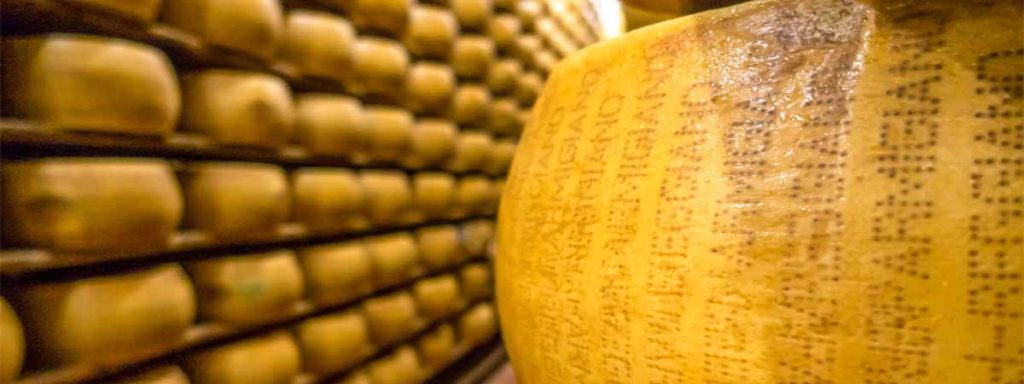Modena is a splendid city located in the Emilia Romagna region on a high plain between the Secchia and Panaro rivers. Emerging along the Roman Via Emilia, Modena has been an important node on the commercial routes between the north and the south since the earliest times.
The original nucleus of Modena as we know it today was formed in the Middle Ages, perhaps around the church built on the tomb of Bishop Gimignano and over an old necropolis located at the northwest from the Roman city of Mutina. But the territory has been inhabited from the earliest times.
During the Renaissance, the city expanded towards the north with the so-called “Herculean Addition” commissioned in 1551 by Ercole II d’Este. This strengthened the urban defensive system with robust bastions and reinforced city walls.
The history of the city is strongly linked to the history of the House of Este, and their reformatory work led to a rationalization of the urban plan. Due to their intervention, Modena achieved a greater balance from the point of view of infrastructure, disposition of the edifices and of the green spaces.
After the unification with Italy, the inhabited center quickly expanded outside the city walls, which were demolished at the beginning of the twentieth century in an attempt to accommodate wider avenues.
The city thus assumed its current appearance, with residential districts prevailing in the south and east, and industrial and commercial developments flourishing in the north and west, near the railway and close to the main communication routes.
Significant urban changes took place after World War II and mainly involved the industrial village of Modena-Est.
PREHISTORY OF MODENA
Although the modern city of Modena was only established during the Middle Ages, prehistoric evidence suggests that the area has been inhabited by early civilizations since the Bronze Age. The vast majority of archaeological findings from the era were identified at the Apennine foothills in an area called Terramare and are dated between the second and first millennium BC.
According to Roman chronicles and artifacts exhibited in the various museums of the city, the territory was occupied first by the Ligurians and Celts, followed by the Etruscans in the third century BC.
The Roman settlement established on today’s territory of Modena was first mentioned at the beginning of the second century BC during the great Roman expansion towards the north. In fact, in 187 the Romans built the great arterial route, Via Emilia, between Rimini and Piacenza, and four years later, the capital established the colony of Mutina in the region.
The settlement was characterized by a traditional Roman plan that is still visible in today’s urban area, towards the east of the city center.
One of the most important Roman events linked to the city is the famous battle of Modena that was crucial for the Second Triumvirate.
HISTORY OF MODENA
Like numerous Italian cities, Modena entered a dark age in the fourth century AD, after the fall of the Roman Empire.
Apart from the terrible raids of the barbarian invasions, the city was devastated by severe flooding that transformed the whole area into a swamp between the sixth and seventh centuries. Devastated by floods and famines, the city was also the scene of centuries-long struggles between the Langobards and the Byzantines.
The decline came to such an extent that the end of the eighth century found Modena almost completely abandoned.
The conditions started to improve with the imperial concessions to the churches and the foundation of the Abbey of Nonantola. But the city only experienced a true rebirth at the end of the ninth century when bishop Leodino, with the consent of the Byzantine Emperor, built city walls around the cathedral.
Modena gained its independence from imperial power and the Roman Curia in the twelfth century, and a symbol of the vitality of the community was seen in the decision to build a new cathedral, despite the enormous economic sacrifice.
The peculiar thing is that the edification works began when the See of Modena was vacant, the initiative expressing, therefore, a popular wish and not an authoritarian one.
However, independence came with a price and the following vicissitudes, accentuated by the political instability and numerous civil wars, took their toll on the city. This period found Modena involved in constant struggles for regional supremacy against other cities, including Reggio Emilia, Ferrara, Mantua, and Bologna.
The municipal period was also characterized by city feuds. Like in many other cities in the region, the power was disputed between the Guelph and the Ghibelline factions, locally represented by the families of Aigoni and Grasolfi, respectively. In parallel with the struggles, thanks to the influence of Bologna, Modena founded its University, among the most ancient in the world (though it has not continuously operated since its founding).
The battles between the Guelphs and Ghibellines divided the population, and in 1289 Aigoni handed the keys of the University to Obizzo d’Este, the Marquis of Ferrara, in a sign of submission. From then on, the history of Modena was linked to the history of the Este, apart from short interruptions in the fourteenth century.
The Este family brought wealth to Modena, and during the Renaissance, Duke Ercole II decided to expand the city towards the north with the so-called “Herculean Addition,” whose urbanization plans are still visible today. Apart from this, the Renaissance represented a period of great cultural liveliness for Modena.
In 1598 Alfonso II, the Duke of Ferrara and Modena, passed away leaving no heir. Taking advantage of his death, the Pontifical State finally succeeded in claiming power over Ferrara, leaving the new Duke, Cesare d’Este, (cousin of Alfonso II) to find refuge in Modena.
By moving their court to Modena, the Este favored the progress of the city, including the publication of new rules and laws, such as a civil penal code, which is considered one of the best of its times. Established in 1771, the new penal code anticipated many of the successive reforms that shaped the development of law in Europe.
French troops arrived in Modena in 1796, and in August 1796 the city rose against the Este. That October, immediately after the arrival of the French, the city hosted the first Cispadane Congress, followed by another one the following year.
This marked the entry of Modena into the Cisalpine Republic. Subsequently, the city was occupied by the Austrians, was involved in the creation of the first Italian Republic, and then the proclamation of the Kingdom of Italy.
After the Congress of Vienna in 1814, the Duchy of Modena freed itself from the rule of the Este. As a reaction to the events, Archduke Francis of Austria, a descendant of the Este family, began a reactionary and despotic regime that was against the idea of progress and freedom.
During this period, the insurrectional attempt of Ciro Menotti took place, who wanted to achieve the independence of Italy. However, his patriotic ideals were brought to an end as he was caught and executed in May 1831.
Francis V was the last ruler of the Duchy of Modena before it became part of the Kingdom of Italy in 1860.
After the unification, the glorious capital of the Duchy of Este was downgraded to an average-size city of modest importance in the new country. This marked the beginning of a less eventful period for Modena, although the city continued to maintain traces of its golden period.
The first Archives of the State were founded in Modena in 1862 and in 1867, King Vittorio Emanuele II founded the Military Academy. At the end of the nineteenth century, the new administration of the city destroyed much of the historical heritage by dismantling the imposing city walls to give space to larger roads.
The city suffered significant losses during World War I, and the struggling period that marked the first half of the twentieth century took its toll on Modena.
World War II brought poverty and disasters. The German troops established their headquarters in the Ducal Palace while many bombing raids shook the city. One of the largest Italian sorting camps for the Jews was established in the province of Modena, but the inhabitants of the city opposed oppression, and the Resistance movements managed to free the city just a few days before the arrival of the Allied troops.
During the war, Enzo Ferrari founded the iconic eponymous racing car stable subsequently became famous worldwide.
Since the end of the war, Modena has not stopped growing; the city continued to develop until it became one of the most solid realities in Italy, and the success of its development is based on the affirmation of small and medium-sized industries in the most diverse sectors, from food to luxury cars. This allowed the city to gain authority on an international level.
The most famous companies based in Modena are Ferrari and Maserati, while from a culinary point of view, the city boasts balsamic vinegar and numerous other delicacies.
The city is rich in cultural sites, and since 1997, the Romanesque Cathedral of Modena, the Ghirlandina Tower, and Piazza Grande have been a designated UNESCO World Heritage Site.
ARCHAEOLOGY OF MODENA
Archaeology is well-represented in Modena in both open-air sites and museums. A noteworthy site is the NoviArk Archaeological Park located in the outskirts of the Roman city of Mutina. Characterized by large cobblestone streets and other Roman elements, the area includes a necropolis, countless funerary monuments, and numerous tombs.
The archaeological findings include rural buildings, production facilities and other various remains. The findings are placed in chronological order from the first century BC to the fifth century AD, and the site is open 24 hours a day, seven days a week.
The Roman Epigraphic Museum, located in the west wing of Palazzo dei Musei edifice, is a section of Roman stone slabs and tablets which represent monumental testimonies of Mutina. The artifacts were discovered in a perimeter outside the Roman settlement, perhaps in the place of an Imperial age necropolis.
These artifacts also include evidence of the importance of the Via Emilia. Many other testimonies related to various periods and rulers are also housed in the museum.
The Archaeological and Ethnological Museum is another noteworthy place to visit from an archaeological point of view. Set up on archeological collections arranged in chronological order, the museum houses artifacts from the prehistoric and historical ages from the Lower Paleolithic to the Middle Ages.
Particularly significant are some prehistoric findings originating from the fifth to the fourth millennium BC. Evidence of the Terramare inhabitants and from the Bronze Age is represented by multiple ceramic and bronze objects.
The Archaeological Park of Terramara di Montale is only a short distance from Modena, offering an immersive experience into the life of prehistoric civilizations.
Don't just see Italy, live it.
Your dream trip to Italy has never been closer
No more endlessly scrolling travel sites. Our travel experts will craft the perfect, one-of-a-kind trip just for you.

300+
DESTINATIONS
We offer more Italian destinations than any travel site. Do and see more with Trips 2 Italy.
1 (of a kind)
ITINERARIES
Because your dream trip to Italy should be designed for you, not for the masses.
100%
PEACE OF MIND
From flights and accommodations, to food and activities - we take care of every detail.


